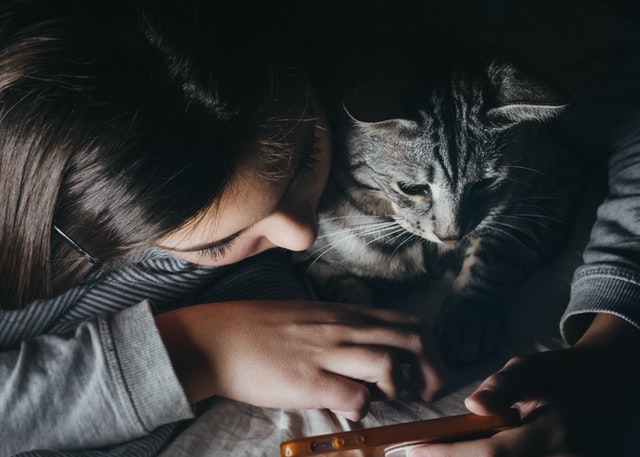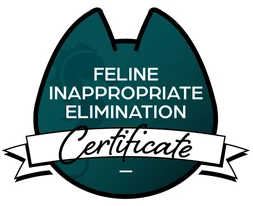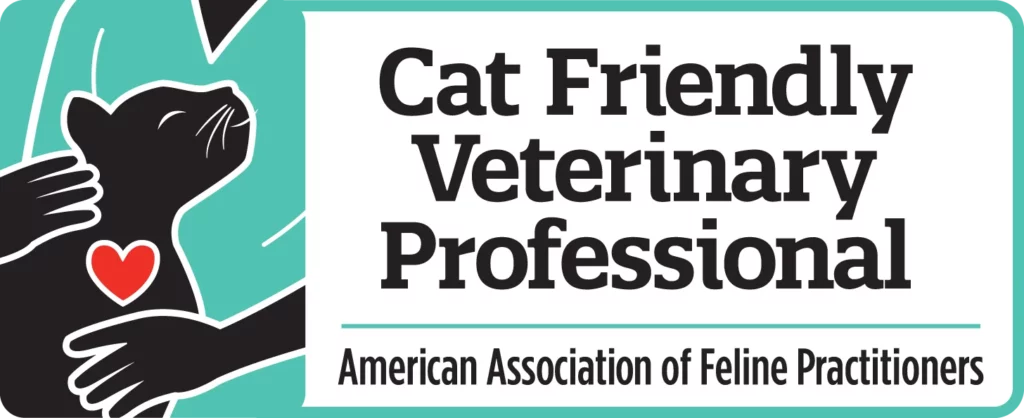Separation anxiety, while mostly associated with dogs, can occur in cats as well. In cats, it can be a distressing (and sometimes loud) experience for both the cat and their owners. If your furry friend becomes anxious and exhibits undesirable behaviors when you’re away or even just in the other room, it’s important to address their anxiety in a positive and gentle manner. Doing things that may increase your cat’s fear is likely going to backfire and make the problem worse.
As a cat behaviorist, I often have to have clients keep their cats sequestered for temporarily for a variety of my behavioral interventions. Unfortunately, that means I have a lot of experience helping people attempt to keep their cat calm while we’re working together. It’s not an easy thing to do for certain cats, but it’s necessary. Whether you’re working with me or trying to manage it on on your own, let’s explore a few effective strategies to manage separation anxiety in cats while promoting their well-being and fostering a stronger bond between you and your feline companion.

Understanding Separation Anxiety in Cats
While the term “separation anxiety” may seem intuitive, let’s make sure we know exactly what we’re talking about before we dive any further into this topic. Separation anxiety (or, as it is also called, separation related problems) occurs when cats become stressed, upset, or anxious due to their owner’s absence. Some cats may also show signs of separation anxiety when separated from a bonded companion or display a similar phenomenon known as isolation distress when completely alone.
Common signs of separation anxiety may include excessive vocalization, destructive behavior, urinating or defecating outside the litter box, excessive grooming, or changes in appetite. It’s crucial to remember that cats exhibit these behaviors out of distress rather than spite. They’re not doing it out of revenge or because they hate you. If anything, your cat likes you a bit too much. Therefore, responding with compassion and working to help your cat feel secure when you’re not around are critical to a successful resolution.
Techniques for Soothing Anxious Cats
As an Elite Fear Free Professional, I make it no secret that I prefer positive reinforcement based techniques to address behavior problems in cats. The science is clear that positive reinforcement works better than punitive methods and, especially in cases of an anxious cat, you’ll be working on building their confidence rather than making them feel more afraid.
Before we get into the techniques, a general piece of advice that holds true across all interventions: patience is key when implementing any method to address separation anxiety in cats. Every cat is unique, and it may take time to find the specific strategies that effectively help them feel better. It’s important to observe and listen to your cat’s cues as they will communicate their comfort levels and how they’re feeling.
By being attentive to their needs and adjusting your approach accordingly, you will build trust and create a sense of security for your feline companion. Remember, the journey to alleviating separation anxiety is a gradual process, but with dedication and a compassionate mindset, you can make significant progress in helping your cat overcome their anxiety and thrive in your absence.
Make Your Departure Fun
Start by practicing short departures and arrivals to help your cat become accustomed to your routine. Depending on what you’re trying to do, you may need to leave the house briefly or just close a door for a few moments. Whether they have a single room or the run of the house, provide them with a safe space, interactive toys, and environmental enrichment to keep them engaged and distracted during your absence. Reward calm behavior with treats, praise, or playtime upon your return.
You can also put them in a good mood ahead of your departure with play. Engage in interactive play sessions with your cat before you leave. This will help them release energy and provide mental stimulation, promoting relaxation during your absence. For best results, use toys that encourage hunting and pouncing behaviors. You can reward their participation with treats or praise. Adding in a small meal at the end of a play session can make it even more satisfying for your cat.
Want some tips on how to best play with your cat? Dr. Mikel Delgado and Lili Chin, put together a fabulous guide on interactive play in cats. I strongly suggest you check it out, along with picking up a copy of Dr. Delgado’s book Play With Your Cat.
If you are working with your cat to get them used to being separated in a specific room, play sessions should be in that room. This will help build a positive association with the room rather than making it a place they don’t want to be. You’ll notice slightly faster results and your effort will be more fruitful.
If all else fails? Consider catnip or a catnip alternative like silver vine. Drugs are occasionally the solution.
Create a Calming Environment
Set up the environment so your cat feels secure and comfortable. Include their favorite bed, toys, and a pheromone diffuser that releases calming chemicals. Additionally, playing soft classical music or using white noise machines can help create a soothing atmosphere for your feline friend. If you’re really looking for something that your cat likes, there’s even music specifically composed for cats you can play for them.
You can help create a calm and fun environment by providing your cat with puzzle feeders or treat-dispensing toys. These interactive feeding devices stimulate their problem-solving abilities and keep them occupied in a positive way that doesn’t require you to be there. As your cat learns to associate your departures with engaging activities and rewards, their anxiety levels may decrease.
Desensitize Your Cat To Your Absence
Gradually desensitize your cat to departure cues, such as picking up your keys or putting on your coat. Associate these cues with positive experiences by offering treats, playtime, or gentle petting. This process helps your cat form positive associations with previously anxiety-inducing triggers.
Once they’re used to the cues that you’re leaving being associated with good things, you can work on actually leaving. Start by practicing short departures and arrivals to help your cat become accustomed to your routine. Depending on what you’re trying to do, you may need to leave the house briefly or just close a door for a few moments. Gradually build up the time you’re gone while making sure your cat doesn’t become upset by your absence.
Seek Professional Guidance
Addressing separation anxiety can be challenging to solve. If your cat’s separation anxiety persists despite your best efforts, consider consulting a cat behaviorist or your veterinarian. They can provide personalized advice, tailor-made behavior modification plans, and additional support to address your cat’s specific needs. Your veterinarian may also prescribe a medication to help your cat as your work to help them feel safer.
Managing separation anxiety in cats requires patience and understanding. By implementing these techniques and providing a nurturing environment, you can help soothe your anxious cat and strengthen the bond you share. Remember, each cat is unique, and it may take time to find the strategies that work best for your furry friend. With your love and guidance, you can support your cat’s emotional well-being and create a harmonious home environment.
If you’re seeking professional guidance in managing separation anxiety or any other cat behavior concerns, don’t hesitate to set up a consultation. Together, we can ensure a happier and more fulfilling life for your beloved feline companion.










